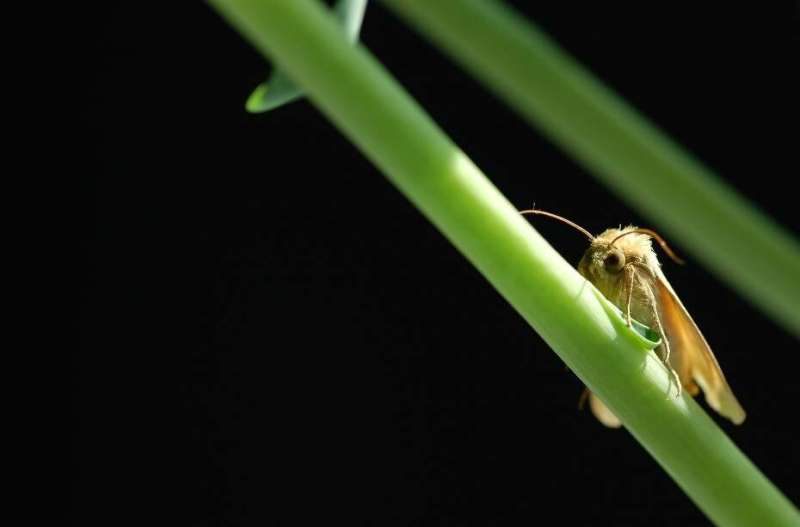Minor genetic change creates unattractive female moths

Sex pheromones are chemical compounds released by an organism to attract potential mates. For moths in particular these sex pheromones are very important for mate recognition, as they rely completely on scent signal rather than visual signals in mate attraction. However, there is still little known about the genes underlying sex pheromone variation. Information that is crucial for understanding how sexual communication evolves.
Unattractive females
"We aimed to identify the genetic basis of sex pheromone variation in a moth species that shows large variation within populations," explains lead author Prof. Astrid Groot from the UvA Institute for Biodiversity and Ecosystem Dynamics (IBED). "We first selected themoths that produced extreme pheromone blends, followed by crossing and backcrossing the moth individuals. What we found was a single point mutation, a minor genetic change, that resulted in the change of one specific enzyme that shifted the female sex pheromone from having a low ratio to an extremely high ratio of specific sex pheromone components, which rendered females completely unattractive."
To date, most genetic studies have found that multiple mutations with interacting effects affect pheromone blends and other sexual signals, which indicates that evolutionary changes happen through small steps. Therefore, it is surprising that this study found a single mutation that affected the biosynthesis of this moth's sex pheromone in a major way.
Different male vs female response
The research team had another interesting discovery, as they found out that the very same mutation in male moths did not affect their behavior. Genetic studies in the past decade in Drosophila and crickets showed that sexual signals and responses are genetically linked, so that a mutation in the sexual signal in one sex also changes the sexual response to that signal in the other sex. In moths, this is obviously not the case; while the female signal shifts from being attractive to being completely unattractive, males with this mutation respond in the same way as males without this mutation: both are similarly attracted to the attractive blend.
"This study taught us that the evolution of sex pheromones may not happen in small steps, but through sudden and large transformations. This may explain the high diversity of moths, which are with 130.000 species one of the most diverse group of animals on Earth," concludes Prof. Groot.
More information: Astrid T. Groot et al. Within-population variability in a moth sex pheromone blend, part 2: selection towards fixation, Royal Society Open Science (2019). DOI: 10.1098/rsos.182050
Journal information: Royal Society Open Science
Provided by University of Amsterdam

















